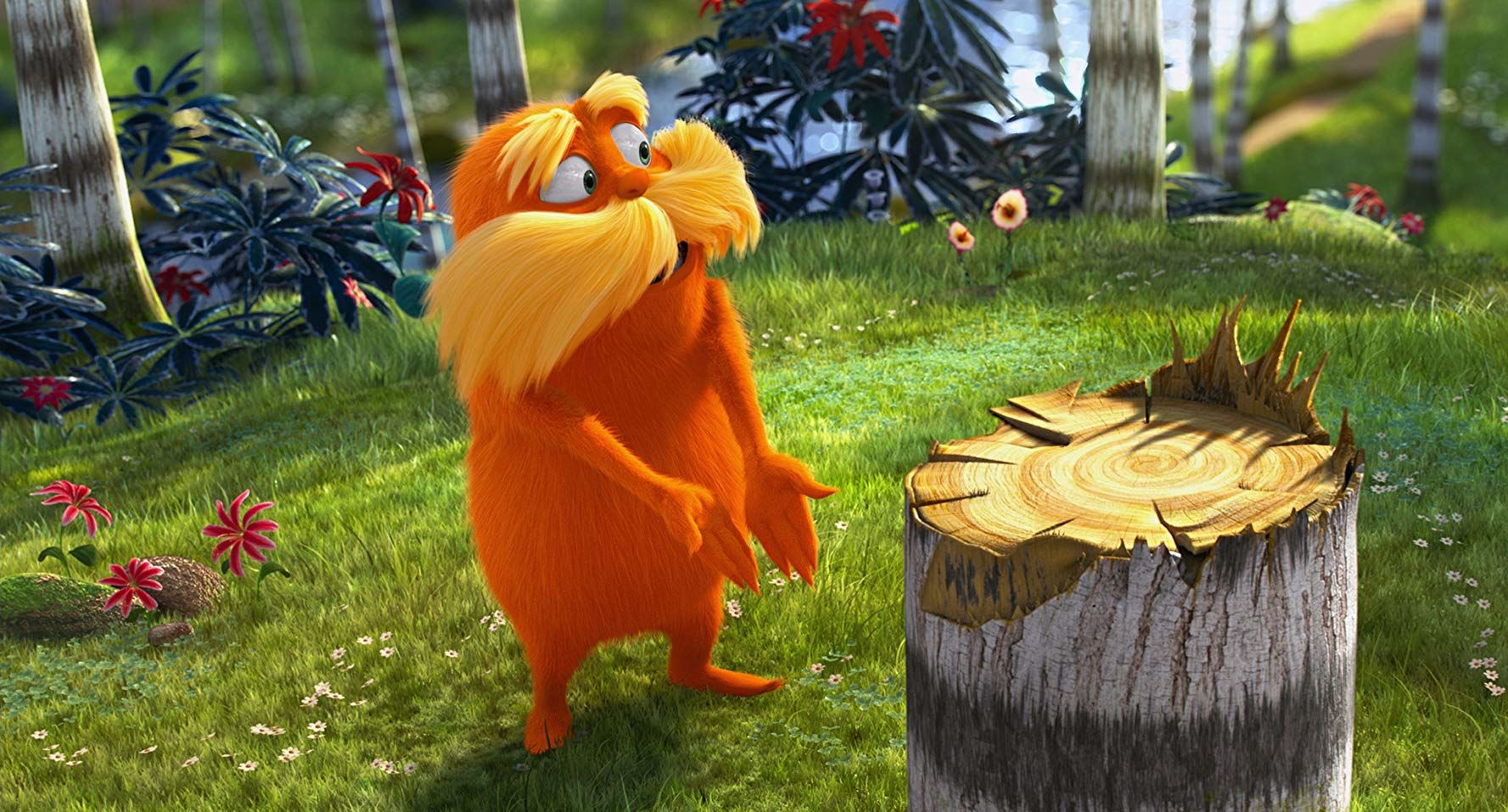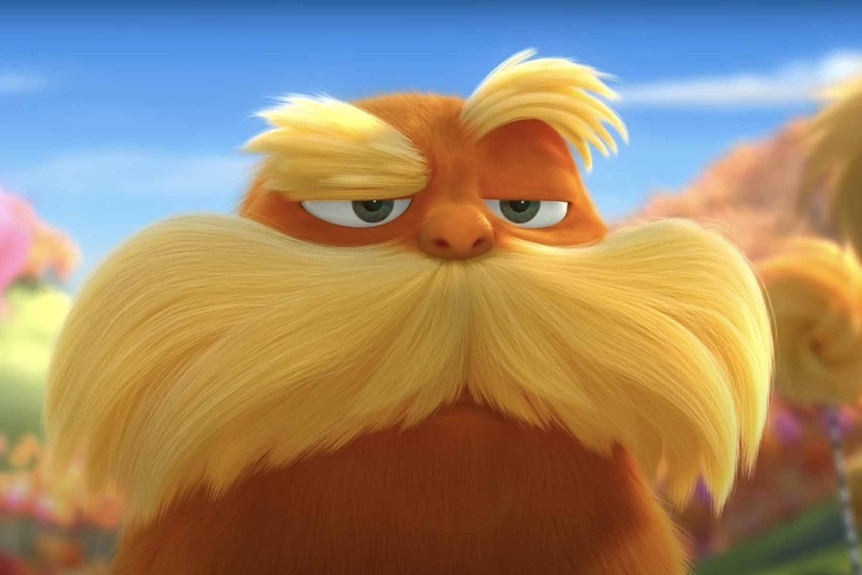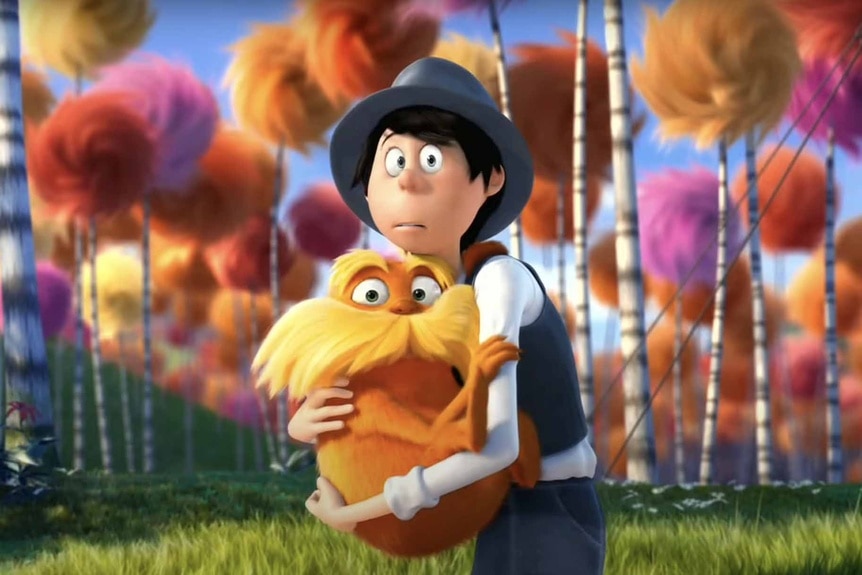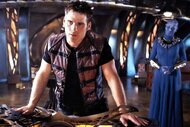Create a free profile to get unlimited access to exclusive videos, sweepstakes, and more!
What Would Happen if We Cut Down All Trees? The Science Behind The Lorax
How the world might change if every tree died.

In 2012, viewers were whisked away to a Seussian dystopia in Illumination Entertainment and Universal Pictures’ The Lorax. Based on the Dr. Seuss story of the same name – and overflowing with stars including Danny Devito as the titular Lorax, Ed Helms, Taylor Swift, Rob Ribble, Jenny Slate, and Betty White – the story takes place in a world without trees.
In the not-so-distant past of The Lorax, outside the walled city of Thneedville, there were once lush forests of Truffula trees as far as the eye could see. Now, there is a barren wasteland. See, the Truffula trees are good for making thneeds, and thneeds are good for making money. Left unchecked, the mad dash for cash felled every last Truffula.
Without trees, the ecosystem collapsed and the citizens of Thneedville fell to the mercy of the wicked mayor Aloysius O’Hare (Riggle), who controls the flow of manufactured air.
For More About Trees:
The Evolution of Tree Roots Nearly Ended Life on Earth
Ancient Solar Storm Captured in 14,000 Year Old Tree Rings
2 Millimeter Valhalla Wasp is the Smallest of its Kind, No Pym Particles Needed
What Might a World Without Trees Look Like?
In the real world, trees are even more useful and valuable than the fictional Truffula, and they’re facing similar threats, on an admittedly slower timeframe. Over the last 12,000 years or so, since humans started practicing agriculture, we’ve collectively cleared roughly half of the planet’s trees, according to a 2015 study published in the journal Nature. Of course, we’re better at deforestation today than we were a hundred years ago (not a talent we should be particularly proud of); the rate of deforestation has increased and is likely to continue to increase over time.
If Dr. Seuss’ ecological cautionary tale remains unheeded and the world really lost all of the trees, we’d be in a whole heap of trouble, but lack of oxygen might not be one of those troubles. Trees do pump out large amounts of oxygen but the majority of the world’s oxygen production takes place in the oceans, courtesy of microscopic photosynthesizers. Even if they disappeared too, the oxygen currently on the planet would last us for a while. The other consequences of disappearing forests would be more immediate.
Any arboreal (tree-dwelling) creature would be hosed. They depend on trees for their homes and for food. Their entire existence hinges on the presence of trees, without them they’d be lost, and that includes most of our primate cousins. That’s going to be a problem for the obvious suspects like birds, but it’s much wider ranging than that. An estimated 80% of land animals and plants live in forest ecosystems.
Anything living in the forest is going to go extinct unless it can rapidly find a new place to set up shop. We’d likely see a sort of evolutionary game of musical chairs unfold as too many species scramble for too few niches. In the film, the thneed-wearing people take refuge in walled cities where the ecological devastation doesn’t reach them. In real life, things wouldn’t be so cut and dry. Previous research reveals that biodiversity is between 50% and 100% richer in non-forested areas with scattered trees, when compared with totally open areas.
Even a single tree provides an ecological anchor point. Insects can live in and on the tree, attracting birds, bats, and other insectivores. Fruit, seeds, or nuts might attract other birds or squirrels, which in turn draw other animals. Fallen leaves or needles protect wintering needles and feed fungal networks in the soil. An entire ecosystem can spring up around a single tree and all of that would be lost a few trillion times over in a world without trees.
The Hidden Strength and Resilience of Trees
In addition to supporting other organisms, trees provide foundational support for the Earth itself. As trees pull in carbon dioxide and convert it to oxygen, they stash that carbon in their woody flesh, keeping it out of the atmosphere and slowing the advance of climate change. Every year a mature tree can suck up as much as 48 pounds of carbon dioxide and lock it away.
To facilitate those biological processes, trees go through a huge amount of water, and they help to keep the world’s water cycle pumping in the process. Trees suck most of their water out of the soil, push it up through their bodies and release it into the air when they respirate. A mature tree can pump upwards of 150 tons of water vapor into the air every year. That water vapor which later forms into clouds and rains down elsewhere.
In many places, the difference between a lush paradise and a dry, arid desert is the presence of trees. Without trees, the soil can’t hold onto water and it dries out. Then when it rains again, the area floods or washes out. Trees act as environmental sponges, holding water in place and transporting it through a more consistent and regulated water cycle.
These are only a handful of the things trees do for us. We haven’t even touched on their roots anchoring sediments and preventing landslides, their medicinal value, or the downstream consequences we can’t even imagine. The loss of all trees would almost definitely be devastating to life on Earth, but it’s unlikely ever to happen.
While forest conservation efforts are hugely important, even if we all grabbed our axes and started cutting down trees until all of them were gone, at least some of them would return relatively soon. Some species of tree have huge root systems which remain alive even if the above ground tree is entirely destroyed. In some cases, those root systems can sprout again and grow new trees even after an entire forest is cleared. It’s a clever evolutionary trick trees use against forest fires, allowing a forest to recover after it’s been burned to the ground.
Similarly, some trees have cones which survive for years with mature seeds inside. When a fire sweeps through, the resin binding, the cone melts, seeds are released, and new trees grow. To truly get rid of trees, you’d also have to contend with every seed and nut dispersed or buried by any animals before the great tree culling. Depending on the species, some seeds can survive for hundreds or thousands of years, waiting to sprout when the conditions are right.
A world without trees wouldn’t be horrible like The Lorax, it would be horrible in totally different and even worse ways. And while we’re unlikely to totally deforest the planet, these tragedies happen in small ways every time we cut down a tree or clear a patch of forest, and if the data is an indicator, it’s going to keep getting worse. Unless…
Catch Dr. Seuss’ The Lorax, available from Universal Pictures.




























